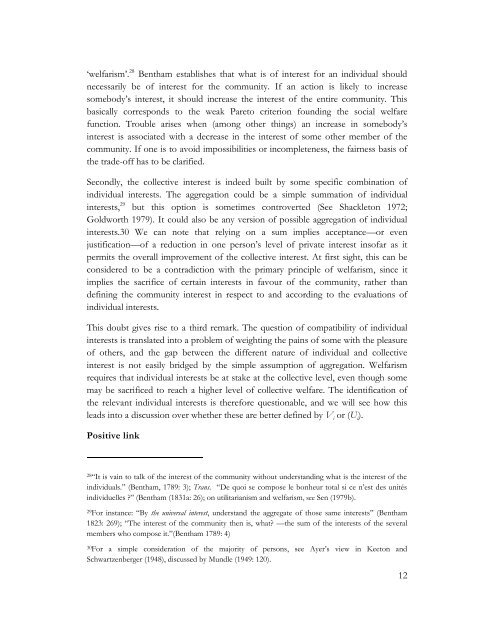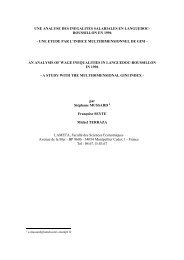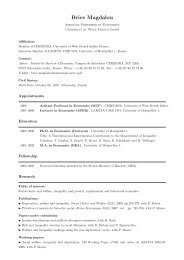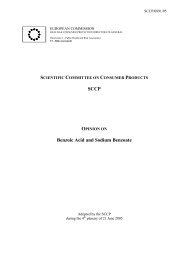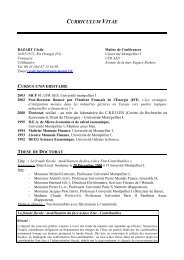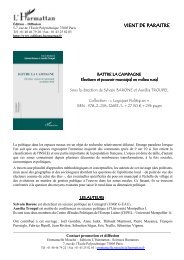COLLECTIVE INTEREST VS - Lameta
COLLECTIVE INTEREST VS - Lameta
COLLECTIVE INTEREST VS - Lameta
You also want an ePaper? Increase the reach of your titles
YUMPU automatically turns print PDFs into web optimized ePapers that Google loves.
‗welfarism‘. 28 Bentham establishes that what is of interest for an individual shouldnecessarily be of interest for the community. If an action is likely to increasesomebody‘s interest, it should increase the interest of the entire community. Thisbasically corresponds to the weak Pareto criterion founding the social welfarefunction. Trouble arises when (among other things) an increase in somebody‘sinterest is associated with a decrease in the interest of some other member of thecommunity. If one is to avoid impossibilities or incompleteness, the fairness basis ofthe trade-off has to be clarified.Secondly, the collective interest is indeed built by some specific combination ofindividual interests. The aggregation could be a simple summation of individualinterests, 29 but this option is sometimes controverted (See Shackleton 1972;Goldworth 1979). It could also be any version of possible aggregation of individualinterests.30 We can note that relying on a sum implies acceptance—or evenjustification—of a reduction in one person‘s level of private interest insofar as itpermits the overall improvement of the collective interest. At first sight, this can beconsidered to be a contradiction with the primary principle of welfarism, since itimplies the sacrifice of certain interests in favour of the community, rather thandefining the community interest in respect to and according to the evaluations ofindividual interests.This doubt gives rise to a third remark. The question of compatibility of individualinterests is translated into a problem of weighting the pains of some with the pleasureof others, and the gap between the different nature of individual and collectiveinterest is not easily bridged by the simple assumption of aggregation. Welfarismrequires that individual interests be at stake at the collective level, even though somemay be sacrificed to reach a higher level of collective welfare. The identification ofthe relevant individual interests is therefore questionable, and we will see how thisleads into a discussion over whether these are better defined by V i or (U i ).Positive link28 ―It is vain to talk of the interest of the community without understanding what is the interest of theindividuals.‖ (Bentham, 1789: 3); Trans. ―De quoi se compose le bonheur total si ce n‘est des unitésindividuelles ?‖ (Bentham (1831a: 26); on utilitarianism and welfarism, see Sen (1979b).29 For instance: ―By the universal interest, understand the aggregate of those same interests‖ (Bentham1823: 269); ―The interest of the community then is, what? —the sum of the interests of the severalmembers who compose it.‖(Bentham 1789: 4)30 For a simple consideration of the majority of persons, see Ayer‘s view in Keeton andSchwartzenberger (1948), discussed by Mundle (1949: 120).12


